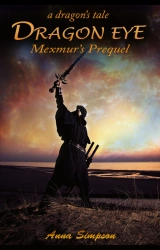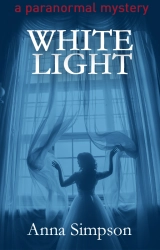We, as authors, put our characters into situations and let them loose. Then we make notes as to what they do, who they like, what they know, and all the baggage they drag  along behind them. Eventually we picture a face, a build, an age, etc. and note that too. The more situations our characters face the better we know them the better we can flesh him out.
along behind them. Eventually we picture a face, a build, an age, etc. and note that too. The more situations our characters face the better we know them the better we can flesh him out.
How to share what we know with the reader?
1st impression – give the reader something right away, just like when you meet someone at a party. Start slowly. Think incredibly tall, great skin, too fat, cheap haircut, intelligent, shy, too in-your-space, sarcastic, stinky perfume, etc. I’ve read more than one story where the main character assigned a label like long nose hairs.
Does it match their role – studmuffin, housewife, paperboy, etc. How will the archetype change to be more realistic, or life like? Long nose hair could be an uppity kind of professor. His nose is prominent because he looks down at people.
Adjust to suit – As we all know first impressions can be misleading and very hard to forget, so look for depth, inner conflicts, and inconsistencies within the character. Make sure you know what is really going on behind those eyes? Is their humor funny or a barrier to hide behind? Or is cruelty their an attempt at naked honesty.
And keep track, Use any method that suits like index cards for example. This will help to keep each character consistent and within their spectrum.
Add some easy to remember tags. To keep your characters as individual as possible  and help the reader distinguish one from the other, use tags. The most common ones fall under name, appearance, voice, behavior (thoughts & actions), & body language. Gage the number of identifiers with the character’s role and how often they make an appearance. If they only show up twice, they may only get a job title or hair color.
and help the reader distinguish one from the other, use tags. The most common ones fall under name, appearance, voice, behavior (thoughts & actions), & body language. Gage the number of identifiers with the character’s role and how often they make an appearance. If they only show up twice, they may only get a job title or hair color.
I’ll be posting more on tags next month. Anyone else have suggestions on making characters pop from the first impression. I’d love some tips myself. 🙂










I’d love to add to your list, but I seem to be having a senior moment. Great tips, Anna!
Well, when you think of something I’ll be waiting old-timer hehehe
I think body language is a good one. These are often tags we don’t know about ourselves!
I agree. I’ve learned a lot snooping around 🙂
Great post. I think it’s fun to discover traits as you write the character. Sometimes the character reminds of a real person, so I use the real person’s habits e.g. pushing his glasses up on his nose, spitting tobacco, twirling hair, etc. It’s hard to find a balance though between the action adding to the character or being overused so it gets to be too repetitive and boring.
Sometimes more tags are better than repetitive ones. 🙂
I would say dialogue is one of my favorites and whether or not it enhances and remains consistent with the character created in the book. Great post Anna.
I think you’re right. So many ways to say the same thing and so many attitudes to use while saying them 🙂
Anna, thanks for those great tips. I have to admit characterization can be really hard for me. I think I tend to say either too much or too little. Sometimes on re-reading I’ll be like … yeah, that was a boring character sketch not good prose.
I like your idea of introducing a character as if we were meeting them in person.
Another thing that comes to mind (that I’m working on but I note in most of my favorite fiction) is that the character has some goal (or goals) and is actively working toward those goals. Even if it’s a minor character. Like in Harry Potter, Hermione was really bookish and Ron really wanted to be cool. And Hagrid defended vicious critters.
I agree each character needs some kind of arc or goal. We all do, now don’t we? 😀
One that I love but I often struggle with is giving them a recurrent phrase, something they say often. Teenagers for example often say “dude” and “like”, so depending on which ones you choose you can say a lot about your character. Oh, and accents are also a lot of fun to play with. 🙂
Great tips, thanks so much Anna!
Right, a catch phrase that gives them away. I like it. 🙂
Everyone else has all these complicated systems of plotting/development and I’m over here growing weeds, LOL. Not a bad idea, though.
Thanks. And weeds are only plants that we don’t normally grow. Wait for the flowers. You never know you might like a few of them. 🙂
I love this post because you are so right, first impressions really are everything, whether in books or real life. I usually know right away (within a chapter or two) whether or not I will like or connect with a characters and with talking to someone within the first 10 minutes whether we will mess well or not.
Thanks, that is what I was going for. 🙂
I think those tags are especially important. I’ve recently read a longer book with a large cast that didn’t have the tags, and I kept getting lost. It’s so easy to assign one prominent and defining feature or mannerism.
For the writer and the reader 🙂
First impressions are very important. If a character’s voice is distinctive enough, the need for tags is reduced. Introducing a character through narrative, using comparisons and layering description can really solidify that character in the reader’s mind. Seattle was dim, and dull, and gray all over back then, and Silvie was a rainbow of brilliant hues: an eruption of red ringlets down her back, eyes like chips of sapphire held to the sun, cherry lips, and milk white skin with a gold dusting of freckles..
VR Barkowski
Wow, that’s beautiful 🙂
It’s really vivid…
Beautiful writing 🙂
I’m naturally unobservant. Body language is the thing I find hardest. I often have to google how emotions make people act.
Interesting. I’ve never thought of that, but it is a good idea. 🙂
Love this!
Very solid advice. Meeting the characters like we would meet them in person is one of the simplest tips I’ve read, and it makes perfect sense. I do enjoy when characters have certain individual dialogue words, tones, and even mannerisms that shows the distinction between each other. It helps to cut down on tags and could make the writing stronger.
😉
Exactly. 🙂
I read somewhere that when introducing MINOR characters, especially in a novel or long story, then give them a ‘character signature’ on their first appearance. This helps the reader to remember them later. E.g. A facial quirk, or a habit of dress, or oddity of behaviour like inspecting their nails, invading another person’s body space etc.
If you add this ‘signature’ to a minor character – and echo it whenever they appear – then the reader will be reminded of their personality. 😀
Yes, this 🙂
Great suggestions, Anna. I do a bio on each before starting, but not as thorough as some writers I know. I also try to assign at least one recognizable characteristic–never looks people in the eye, nicotine-stained fingers. Something like that. Thanks for this how-to. Very helpful.
I try, and I love the stained fingers. I may use it too. 🙂
Fantastic post! I find one odd little detail that makes them stand out. Like a weird cowlick or that woman who always stands with her hands on her hips.
You’ve got me seeing it. Nice work 🙂
Body language, wit and ooh my favorite snark.
Snark. yes that would do it. 🙂
I’ll think of something to suggest, this is too fun! 🙂
http://lazypenguins.com/worlds-most-original-product-packagings/
Good. Can’t wait 🙂
Great advice! I think body language and dialogue tell a lot about a character. And do they fit the role is a good one too. Thanks for sharing.
Yes, a great combo to help make a character come alive. 🙂
Love these tips. I love how my characters have a mind of their own.
Strong independence is always a good thing and can cause trouble of the best kind 🙂
Great post! I got some good ideas from it about where I’m lacking!
Glad to help. 🙂
Great post! I don’t think I’ve ever read a story where any of the characters were described as having long nose hair, but think someone needs to write that book! First impressions are important though and hard to forget, so an author needs to be careful. I don’t like it when we’re introduced to a total jerk with no redeeming qualities, then he does a 180 for no reason and the heroine falls madly in love with him! Excuse me? That’s when I’m thrown out of the story and lose interest. 😦
Terri @ Alexia’s Books and Such…
The 180s kill it for me too. 😉